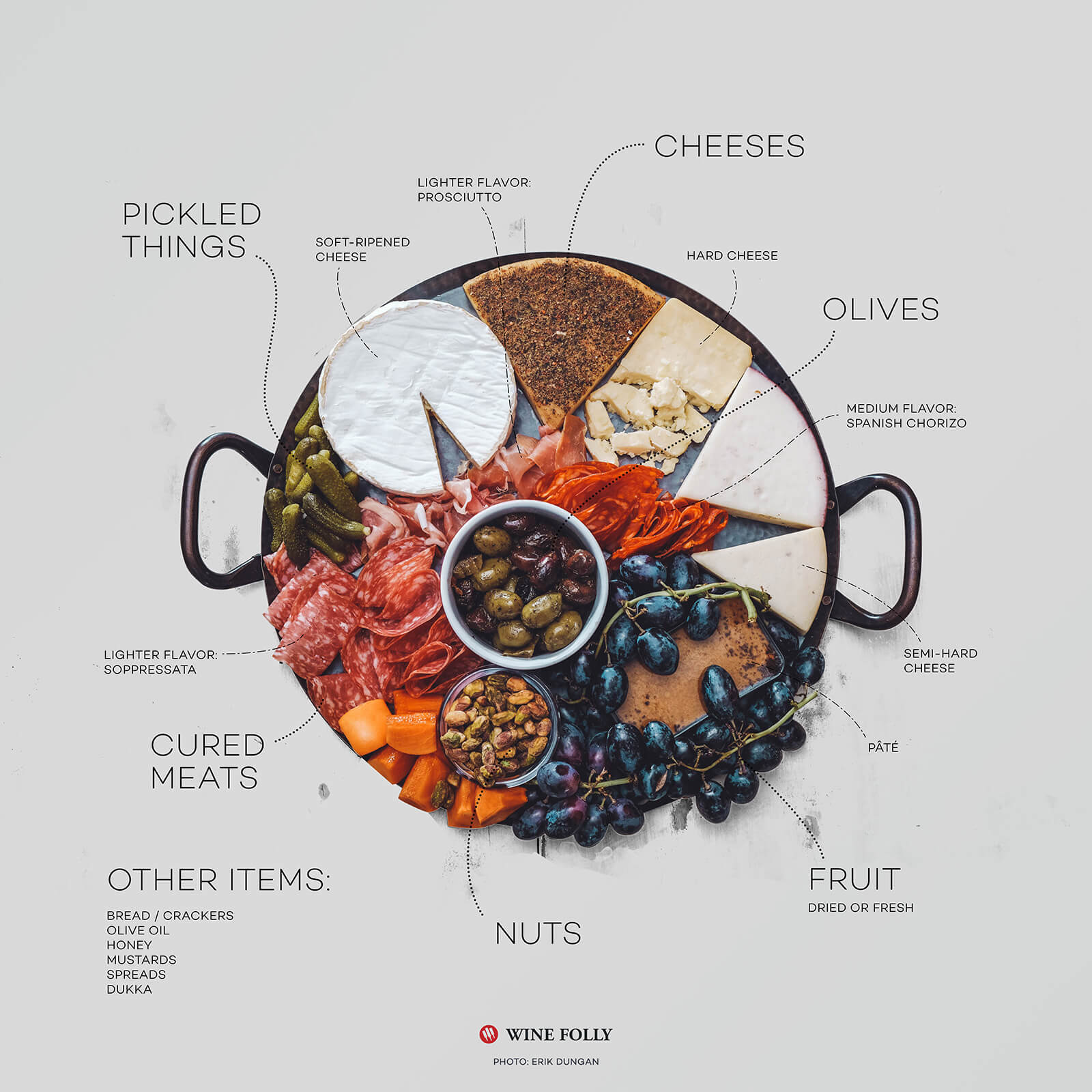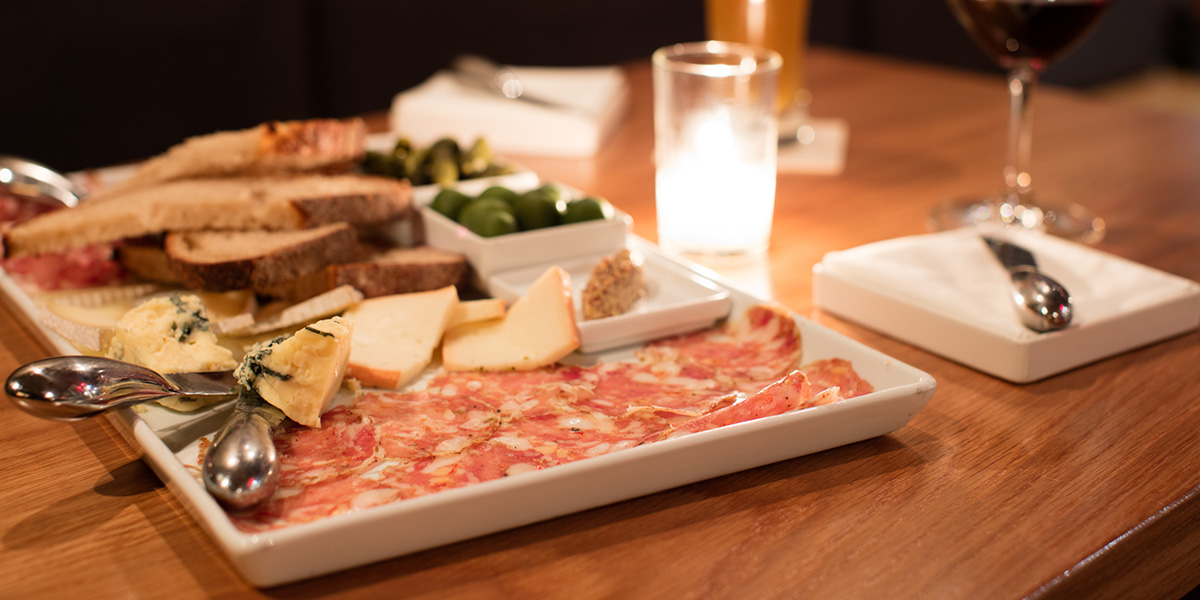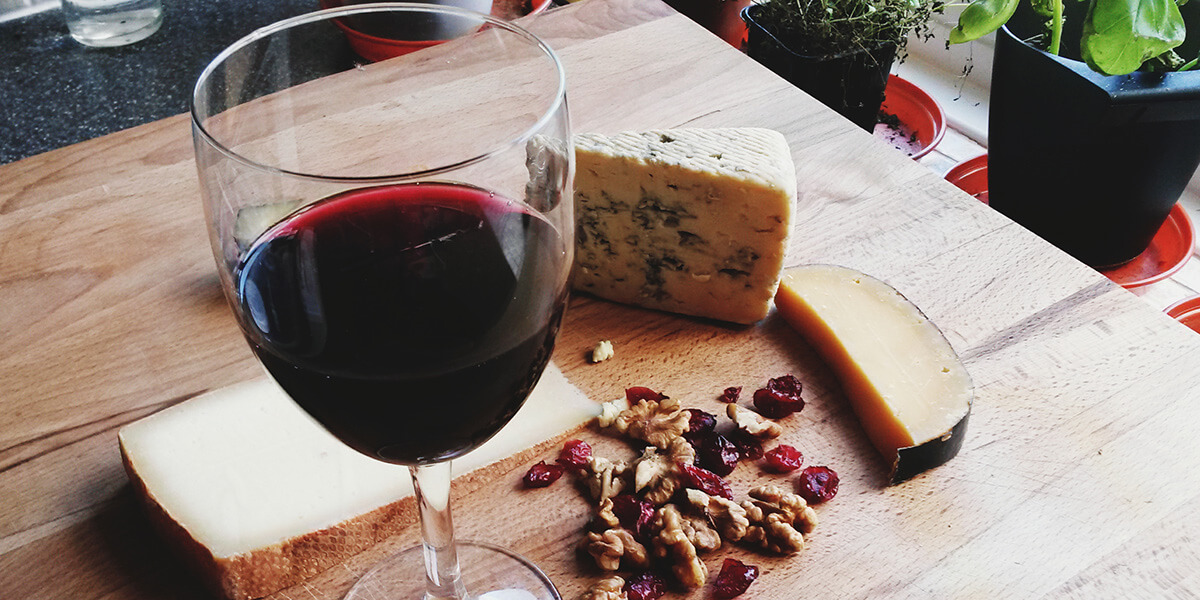A well-curated charcuterie board is a work of art. When paired with the right wines, that artwork becomes a masterpiece.
But unlike the Mona Lisa, you don’t need years of work to create an amazing charcuterie board with the perfect wine pairings. Instead, sticking to a few general principles and simple guidelines will make the process a breeze.
Plus, it doesn’t hurt to know a bit about cheese and charcuterie.
 Anatomy of a charcuterie and cheese board. Original photo by Erik Dungan
Anatomy of a charcuterie and cheese board. Original photo by Erik Dungan
Basic Charcuterie Board Guidelines
Whether you’re entertaining or making an easy weeknight dinner, charcuterie boards are simple to prepare.
Most charcuterie boards include all or some of the following:
- Cheese
- Charcuterie (aka cured and preserved meats)
- Dried and/or fresh fruits
- Nuts
- Olives or other pickled vegetables
- Bread and crackers
- Olive oil, honey, jam, mustards or other spreads
Meat and Cheese Basics
Start by selecting your cheeses and charcuterie. These items will determine what wines you serve. The other components of the board will play a supporting role to the wine, meat, and cheese.
Ends Dec 31.
Choose at least three types of cheese. Select a variety of cheeses based on texture, saltiness, fat content, and acidity. Here are a few examples:
- Fresh cheeses like ricotta and chèvre have higher acidity.
- Aged hard cheeses like Parmigiano-Reggiano taste saltier with stronger flavors.
- Brie and other soft-ripened cheeses have higher fat content.
 Not pictured: me drooling off-camera. By Wine Country Media.
Not pictured: me drooling off-camera. By Wine Country Media.
If the charcuterie board is being served as an appetizer, account for 2oz of meat per person. But if the board is the main meal, double that number.
Again, select a variety of charcuterie based on texture, fat, salt, and spice. For example, consider the creamy texture and buttery flavor of pâté compared to hard, salty dry cured salami.
 Pairing effectively requires a little thinking ahead. By V. Lollipop.
Pairing effectively requires a little thinking ahead. By V. Lollipop.
Wine Pairing Principles
For wine pairings, focus on the food’s main components of salt, fat, and acid. Salt in food will soften wine’s harder elements, like bitter tannins or sharp acidity. At same time, it will enhance the perception of body on the palate.
The wine should always be more acidic than the food you are serving.
Foods high in fats or oils pair well with bolder red wines because the fat counterbalances the high tannins in the wine. But you can also opt for crisp, acidic white wines.
This combination gives the perception of cleansing the palate. The wine’s acidity cuts through the richness from the food.
Aim to match the boldness of a wine to the boldness of…




